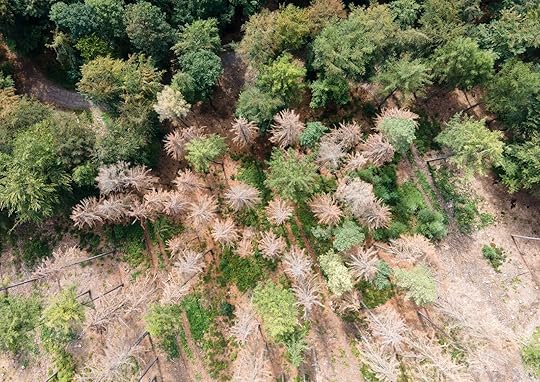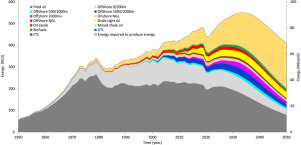Steve Bull's Blog, page 25
May 29, 2024
Trust The “Science”…That Just Retracted 11,000 “Peer Reviewed” Papers
It’s yet another reminder of why blindly ‘trusting the science’ may not always be the best go-to move in the future.
217 year old Wiley science publisher has reportedly “peer reviewed” more than 11,000 papers that were determined to be fake without ever noticing. The papers were referred to as “naked gobbledygook sandwiches”, Australian blogger Jo Nova wrote on her blog last week.
“It’s not just a scam, it’s an industry,” she said. “Who knew, academic journals were a $30 billion dollar industry?”
According to Nova‘s post, professional cheating services are employing AI to craft seemingly “original” academic papers by shuffling around words. For instance, terms like “breast cancer” morphed into “bosom peril,” and a “naïve Bayes” classifier turns into “gullible Bayes.”
Similarly, in one paper, an ant colony was bizarrely rebranded as an “underground creepy crawly state.”
The misuse of terminology extends to machine learning, where a ‘random forest’ is whimsically translated to ‘irregular backwoods’ or ‘arbitrary timberland’.
Nova writes that shockingly, these papers undergo peer review without any rigorous human oversight, allowing egregious errors, like converting ‘local average energy’ to ‘territorial normal vitality’, to slip through.
The publisher Wiley has confessed that fraudulent activities have rendered 19 of its journals so compromised that they must be shuttered. In response, the industry is developing AI tools to detect these fakes, a necessary yet disheartening development. Nova writes:
The rot at Wiley started decades ago, but it got caught when it spent US $298 million on an Egyptian publishing house called Hindawi. We could say we hope no babies were hurt by fake papers but we know bad science already kills people. What we need are not “peer reviewed” papers but actual live face to face debate. Only when the best of both sides have to answer questions, with the data will we get real science:
…click on the above link to read the rest of the article…
Only the Hardiest Trees Can Survive Today’s Urban Inferno
 PHOTOGRAPH: VICENTE MÉNDEZ
PHOTOGRAPH: VICENTE MÉNDEZLast fall, I invited a stranger into my yard.
Manzanita, with its peeling red bark and delicate pitcher-shaped blossoms, thrives on the dry, rocky ridges of Northern California. The small evergreen tree or shrub is famously drought-tolerant, with some varieties capable of enduring more than 200 days between waterings. And yet here I was, gently lowering an 18-inch variety named for botanist Howard McMinn into the damp soil of Tacoma, a city in Washington known for its towering Douglas firs, big-leaf maples, and an average of 152 rainy days per year.
It’s not that I’m a thoughtless gardener. Some studies suggest that the Seattle area’s climate will more closely resemble Northern California’s by 2050, so I’m planting that region’s trees, too.
Climate change is scrambling the seasons, wreaking havoc on trees. Some temperate and high-altitude regions will grow more humid, which can lead to lethal rot. In other temperate zones, drier springs and hotter summers are disrupting annual cycles of growth, damaging root systems, and rendering any survivors more vulnerable to pests.
 Dead larch trees, a result of bark beetle infestation, stand amidst a city forest in Hagen, Germany. In addition to pests, high temperatures and drought have created stress for the native forest.PHOTOGRAPH: JONAS GÜTTLER/GETTY IMAGES
Dead larch trees, a result of bark beetle infestation, stand amidst a city forest in Hagen, Germany. In addition to pests, high temperatures and drought have created stress for the native forest.PHOTOGRAPH: JONAS GÜTTLER/GETTY IMAGES Dead Joshua trees in the eastern Mojave Desert as seen in 2022. Scientists say that climate change will likely kill virtually all of California’s iconic Joshua trees by the end of the century.PHOTOGRAPH: DAVID MCNEW/GETTY IMAGES
Dead Joshua trees in the eastern Mojave Desert as seen in 2022. Scientists say that climate change will likely kill virtually all of California’s iconic Joshua trees by the end of the century.PHOTOGRAPH: DAVID MCNEW/GETTY IMAGES…click on the above link to read the rest of the article…
Peak oil and the low-carbon energy transition: A net-energy perspective
Highlights
Global gross and net-energy of oil liquids production is determined from 1950 to 2050.Energy required for production is estimated to be 15.5% of the actual gross energy.Oil liquids become a limit to a rapid and global low-carbon energy transition.The peak supply vs. peak demand dispute needs to be re-examined.Focus should be put instead on net-energy transition and wise energy consumption.Abstract
Since the Pennsylvania oil rush of 1859, petroleum has quickly become the dominant fuel of industrial society. The “Peak Oil” debate focused on whether or not there was an impending production crunch of cheap oil, and whilst there have been no shortages across the globe, a shift from conventional to unconventional oil liquids has occurred. One aspect of this shift was not fully explored in previous discussions–although of some importance in a low-carbon energy transition context: the extent to which the net-energy supply of oil products is affected by the use of lower quality energy sources. To fill this gap, this paper incorporates standard EROI (energy-return-on-investment) estimates and dynamic decline functions in the GlobalShift all-liquids bottom-up model on a global scale. We determine the energy necessary for the production of oil liquids (including direct and indirect energy costs) to represent today 15.5% of the energy production of oil liquids, and growing at an exponential rate: by 2050, a proportion equivalent to half of the gross energy output will be engulfed in its own production. Our findings thus question the feasibility of a global and fast low-carbon energy transition. We therefore suggest an urgent return of the peak oil debate, but including net-energy issues and avoiding a narrow focus on ‘peak supply’ vs ‘peak demand’.
Graphical abstract

Introduction
Today, oil is a critical supply chain component for 90% of all industrially manufactured products [1]; as such, it is the backbone of industrial civilization …
…click on the above link to read the rest of the article…
Long-term ocean sampling in Narragansett Bay reveals plummeting plankton levels: Impact uncertain for local food web
 Narragansett Bay is one of the most studied estuaries in the world, and its long-running URI plankton survey offers important historical context for the past half-century in the bay. Recent analysis of ocean sampling of the bay reveals plummeting levels of phytoplankton. Credit: URI Photo
Narragansett Bay is one of the most studied estuaries in the world, and its long-running URI plankton survey offers important historical context for the past half-century in the bay. Recent analysis of ocean sampling of the bay reveals plummeting levels of phytoplankton. Credit: URI PhotoUniversity of Rhode Island (URI) researchers estimate that in Narragansett Bay, the level of tiny plantlike creatures called phytoplankton has dropped by half in the last half century, based on new analysis of a long-term time series study of the bay.
That’s what a new paper published by the University of Rhode Island’s Graduate School of Oceanography (GSO) reports—news, recently uncovered, that is both surprising and concerning.
Analyzing the full time series of the bay, the research team found that phytoplankton biomass in Narragansett Bay declined by a stunning 49% from 1968 to 2019. The intensity of the winter-spring bloom, which starts the annual cycle of productivity in the Bay, decreased over time and is also occurring earlier each year.
URI’s new study in PNAS (Proceedings of the National Academy of Sciences) shares information from one of the longest plankton time series in the world. The subject of study is not only a destination for generations of Rhode Islanders and tourists but a fruitful site of research for oceanographers at URI’s Narragansett Bay Campus.
“A lot of people live, work and play on the shores of Narragansett Bay,” Oceanography Professor Tatiana Rynearson says, providing key goods and services for the nearly 2 million people who inhabit its watershed.
…click on the above link to read the rest of the article…
May 28, 2024
Ukraine Confirms France Will Send Military Trainers To Its Soil
Ukraine’s military says it is ‘welcoming’ French trainers in Ukraine, in new remarks which strongly suggest that for the first time France is deploying its troops to Ukraine soil. This marks the beginning of major ‘boots on the ground’ escalation in a formal, public capacity by a NATO state.
“Ukraine’s top commander said on Monday he had signed paperwork allowing French military instructors to visit Ukrainian training centers soon,” Reuters reported Monday, referencing head of the armed forces Col. Gen. Oleksandr Syrskyi.
“I am pleased to welcome France’s initiative to send instructors to Ukraine to train Ukrainian servicemen,” Syrskyi said following video link talks with French defense minister Sebastien Lecornu.
 French military illustrative file image
French military illustrative file image“I have already signed the documents that will enable the first French instructors to visit our training centers shortly and familiarize themselves with their infrastructure and personnel,” he followed with, strongly suggesting the plan is a done deal but may not have been initiated yet.
Syrskyi suggested that France’s commitment and being out front on the “ambitious project” to train Ukrainian forces inside the country would encourage other allies to join the initiative. This follows French President Emmanuel Macron raising the idea repeatedly over the last months of placing Western boots on the ground in Ukraine. He said nothing should be ruled out.
France’s Defence Ministry said told Reuters, “As already mentioned several times, training on Ukrainian soil is one of the projects discussed since the conference on support for Ukraine convened by the President of the Republic on February 26.” This is in reference to the date on which Macron first voiced support for such a plan before a Paris security conference involving defense representatives from around the world.
…click on the above link to read the rest of the article…
Growth or Scale?

Image by Peggy und Marco Lachmann-Anke from Pixabay
Demonstrating that growth can’t continue on a finite planet has been a favorite sport of mine in the past (e.g., here, here, and here). But it’s child’s play, really: not a difficult accomplishment. Still, as blatantly obvious as it is, a surprising number of people are surprised to hear that growth can’t last. I guess that’s what happens when an entire system is predicated on growth’s continuance. Exposing the foundation to be shaky can come as seismic news.
But let’s say that we (collectively) were able to accept that growth is a no-go for the future. Fine. Let’s just stay here, then, shall we? Maybe we fashion a steady-state economy that continues to support the present scale of the human enterprise (perhaps redistributed for better equity) but without those nasty ills of growth.
In this post, I do the simple “math” of presenting graphs (Do the Graph?) to try and ascertain whether the ills stem primarily from growth, or primarily from scale.
Death by Hockey Sticks was a simpler precursor to this post, comparing exponential-looking trends side-by-side and making the simple observation that this moment is highly anomalous, exceedingly brief, and surely can’t continue. Here, we separate growth from scale to see who deserves more of the blame.
Separating Growth and Scale
My intuition going in was that scale is a more important driver than growth in effecting ecological harm, so that stopping growth only stops the acceleration, but not accumulating damage. However, one could try to make the argument that the extractive practices causing such harms represent a one-time “outfitting” of humans with the basic things they need in terms of metals, lumber, agricultural land, solar panels, etc. and can coast to a constant pace once steady state is reached (via circular economy notions, for instance)…
…click on the above link to read the rest of the article…
“Global Trade War Looms, But It’s Not Just Trade War To Fear”
History, Humility, and Wishful Thinking
The UK election and the “I will protect you, but forgot my umbrella” Tory campaign have both been shaken up by its pledge to bring back conscription for 18-year-olds. This is seen as a desperate gamble and sad joke by many commentators, and even ex-military leaders say it’s silly to enroll unskilled, unwilling young adults when the armed forces need more equipment of all sorts, which the recent 2.5% of GDP defense spending pledge falls very far short of. Yet the joke must also be on those laughing when the global backdrop is so very serious.
Stop thinking about Friday’s US PCE deflator data for a moment and look at the bigger picture. The main Bloomberg headline today is the G7 warning China over its trade practices. They want “balanced and reciprocal collaboration,” and will “consider taking steps to ensure a level playing field.” The US is already going to let tariff exclusions on hundreds of Chinese items expire, and the EU may be leaning towards a high tariff on Chinese EVs. Elsewhere, China is asking South Korea to maintain stable supply chains, as it moves closer to the US, and even Brazil, Chile, and Mexico have recently raised tariffs on Chinese steel.
In short, global trade war looms, and as Bastiat noted, “If goods don’t cross borders, soldiers will.” The problematic inverse is that even Adam Smith implied if some goods cross borders, soldiers don’t need to, and others won’t be able to when needed.
It’s not just trade war to fear. China just finished a huge military exercise that clearly rehearsed a blockade of Taiwan and says it will no longer accept US congressional delegations to Taipei: one including the CEO of Nvidia just opted to visit anyway…
…click on the above link to read the rest of the article…
Plastics are everywhere — but mostly in places they shouldn’t be
Turns out, maybe we should have been a bit more responsible with how we used plastics.

A new study in Toxicological Sciences has millions of people searching the Internet to find out: “are microplastics stored in the balls”?

The short answer is yes, with the understanding “balls” is the colloquial term for testicles. Researchers tested human testicles and dog testicles and found microplastics in every sample. Back in February, a separate study found microplastics in every sample of the human placenta that was tested. In fact, “there hasn’t been a body part that people have looked but haven’t found [microplastics] in,” environmental health researcher Tracey Woodruff told Scientific American.
Microplastics — small pieces of plastic less than 5 millimeters long — are, literally, everywhere. They have been found in clouds, beer, wind, apples, poop, honeybees, and much more. Microplastics have been detected in the Mariana Trench and the Grand Canyon, on uninhabited Pacific islands and at the top of Mount Everest.
Woodruff says “it’s not a stretch to think that we’re just going to find more adverse health effects with microplastics.” Those adverse health effects can include reduced fertility, hormone disruptions, immune dysfunction, and other illnesses, according to experts.
Currently, the World Health Organization is busy with other crises with better fear-mongering potential. So they’re not using this unseen enemy to ratchet up concern. A 2019 report from the World Health Organization looked at the evidence related to microplastics in the water cycle. “Based on the limited information we have, microplastics in drinking water don’t appear to pose a health risk at current levels,” said Dr Maria Neira, a director of Public Health, Environment and Social Determinants of Health.
…click on the above link to read the rest of the article…
Ukraine Biolab Watchtower
An attempt to triangulate something approximating truth about Ukraine and Biolabs
This was first published in March 2022. It has withstood the test of time. It is helpful to look back at the early days of the Ukrainian hot war and remember that this all started with a series of USG lies. –
“No reason to get excited”
The thief, he kindly spoke
“There are many here among us
Who feel that life is but a joke
But you and I, we’ve been through that
And this is not our fate
So let us not talk falsely now
The hour is getting late”

Buckle up. This is going to be a long one, but I think the topic deserves a deep dive.
What a mess. Are there any grownups in the house? This is what happens in a world in which no one trusts anyone anymore, integrity is treated as an obsolete concept, both information and legacy media have become weaponized to such an extent that what passes for official reality becomes just a funhouse hall of mirrors, and the experience, intellect and maturity of those entrusted to manage these matters is just not up to the task.

Yesterday I published a substack article titled “All Along the Watchtower”, which posed the question “Would the Russian invasion of Ukraine be justified if it were for biodefense?”.
Since then, we have had a flood of new information drop:
1) Testimony of Under Secretary of State Victoria Nuland to Senator Marco Rubio, in which she admits that Ukraine has biological research facilities.
2) Epoch times’ report “US State Department Denies Russian Allegations of Biological Weapons in Ukraine”.
…click on the above link to read the rest of the article…
Would Returning to the Gold Standard Resolve Our Most Pressing Monetary Problems?
Money in all its forms attracts quasi-religious beliefs and convictions. This makes it difficult to discuss with anything resembling objectivity. But given the centrality of money (and its sibling, greed) in human affairs, let’s press on and ask: would returning to the Gold Standard (i.e. gold as money / gold-backed currency) resolve our most pressing monetary problems?
The conviction that the answer is “yes” is widespread. In this view, President Nixon “closing the gold window,” in 1971, i.e. ending the convertibility of the US dollar to gold in international foreign exchange (FX) markets, is the Original Sin that doomed us to the inflationary Hell of fiat currency, i.e. currency unbacked by anything tangible such as gold or silver.
In this view, the only way to avoid the consequences of this Original Sin–the eventual reduction of fiat currency to zero value via hyper-inflation as the currency is “printed” without restraint–is to return to the gold standard.
So far, so good, but from here on in it gets tricky. We have a long history of precious metals being the only form of money in various economies, and an almost as long history of paper money augmenting precious-metal “real money” (in China, for example) and the issuance of copper coinage to grease small transactions.
Gold-backed currency rolls off the tongue rather easily, but what exactly does this mean? In theory, it means every unit of paper / digital currency in circulation can be converted on demand to a physical quantity of gold or silver at an exchange rate either set by the nation-state’s government or by the market.
…click on the above link to read the rest of the article…



